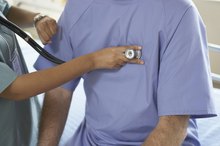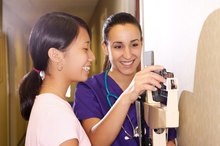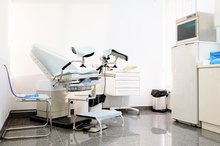What does fact checked mean?
At Healthfully, we strive to deliver objective content that is accurate and up-to-date. Our team periodically reviews articles in order to ensure content quality. The sources cited below consist of evidence from peer-reviewed journals, prominent medical organizations, academic associations, and government data.
The information contained on this site is for informational purposes only, and should not be used as a substitute for the advice of a professional health care provider. Please check with the appropriate physician regarding health questions and concerns. Although we strive to deliver accurate and up-to-date information, no guarantee to that effect is made.
**All adults should have a yearly physical exam, even if there are no existing health concerns.
If you are experiencing serious medical symptoms, seek emergency treatment immediately.
** It is important that you get a full physical exam at least once a year to note any changes in your health status. A comprehensive physical exam not only gives your doctor a chance to look for warning signs of diseases and update your current medical records, but also gives you the opportunity to talk to you doctor about any physical or mental health concerns you might have. There is a list of clinical observations that your doctor should perform during every yearly exam and it is important that you know what to expect.
Vital Signs and General Observations
Your doctor will start the exam by observing your general mood, appearance, interaction, and anxiety level. Vital signs will be recorded. This includes heart rate, blood pressure, and respiratory rate. A general survey of the skin will be taken, looking for any abnormal growths on the skin.
- Your doctor will start the exam by observing your general mood, appearance, interaction, and anxiety level.
- A general survey of the skin will be taken, looking for any abnormal growths on the skin.
Upper Extremities
What Happens During a Male Physical Exam?
Learn More
Inspection of the nails, hands, and arms will be performed next. The doctor will look for skin abnormalities and range of motion in the arms.
Head, Neck, and Throat
The doctor will palpitate the scalp and major lymph node areas, and then look at facial symmetry as well as muscle tone. The eye exam will include assessment of visual acuity in both eyes, inspection of eye lids and cornea, test of papillary response to light, and inspection of the retina. Hearing will be screened. External canal and tympanic membranes are examined, along with the nasal septum. The doctor will test the frontal sinuses for tenderness. The trachea, thyroid, and range of motion in the neck will be examined.
- The doctor will palpitate the scalp and major lymph node areas, and then look at facial symmetry as well as muscle tone.
- The eye exam will include assessment of visual acuity in both eyes, inspection of eye lids and cornea, test of papillary response to light, and inspection of the retina.
Back, Thorax, and Lungs
How Often Should Preteens/Teens Get a Physical Exam?
Learn More
The spine will be examined for asymmetry or curvature.
Breathing ability, the shape of the chest, and surface abnormalities on the skin will be noted. Respiratory expansion will be inspected when you take a deep breath.
Cardiac Exam
The cardiac exam will include palpitation of apical pulse. Your heart beat will be examined using a stethoscope. The jugular vein will be observed, and carotid arteries palpitated.
Abdomen
The abdomen will be inspected for asymmetry, masses, or superficial abnormalities. The four quadrants will be examined for rigidity and dullness. The abdomen will be palpitated lightly over the liver, spleen and bowel areas.
Lower extremities
Knees will be examined, including color, evidence of swelling, and range of motion. Legs and feet are inspected for muscle bulk, joint problems, skin abnormalities, and capillary refill.
Reflex and Coordination Exams
Shoulder, biceps, triceps, hips, knees and feet will be examined for muscle tone, strength, flexion, extension, and sensation. The biceps, triceps, brachiordialis, patellar, Achilles, and Babinski reflexes are tested. Rapid alternating movements (hand slap, toe tap), repeating movements (index finger to thumb), and point to point movements (finger to nose) are checked. You will be asked to stand and walk so the doctor can observe your gait and heel-to-toe walking.
- Shoulder, biceps, triceps, hips, knees and feet will be examined for muscle tone, strength, flexion, extension, and sensation.
Gender specific exams
Women should do a monthly breast self-exam, but are encouraged to get a mammogram every year after the age of 40. Women between the ages of 21 and 65 should get a pap smear every one to three years 2. Men should receive a testicular and prostate exam every year as part of their physical exam.
Immunizations
Depending on age and pre-existing health conditions, you might be encouraged to get vaccinated for influenza, pneumonia, human papilloma virus, meningococcal, hepatitis A and B, or tetanus.
Related Articles
References
Writer Bio
Lissa Delisle began writing in 1997. She has been published in advertisements for Dillards and "The Tennessean." Her areas of expertise lie in graphics and Web design, marketing, social media, beauty and fashion. She is also a makeup artist. Delisle holds a Bachelor of Arts in graphic design from the International Academy of Design and Technology and certification in creative writing from Denver University.








